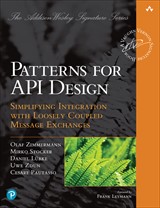
Published: 06 July 2025
Known Uses
The Backend Integration pattern is widely used in enterprise systems and is often distinguished from Frontend Integrations. It’s also known as horizontal integration or system‑to‑system integration.
Discussion Input
In many so‑called system‑to‑system integrations, systems merely exchange data. But when complex tasks – taking minutes or even hours and involving queues or human interventions – are distributed this way, you cannot wait for the job to complete. A standard synchronous RESTful HTTP (request/response) approach quickly encounters time‑outs and lacks scalability.
The Backend Integration pattern aligns with the Enterprise Integration Patterns (EIP) focus on messaging: asynchronous messaging delivers reliability, decoupling and resilience, and avoids blocking callers. Both queue‑based and publish/subscribe channels are widely used for backend integration, exposing APIs for message producers and consumers.
The book also implicitly demonstrates that the Backend Integration pattern enforces separation of concerns, keeping business logic distinct from integration responsibilities. API design matters for asynchronous message channels just as it matters for synchronous Web API calls.

Read the complete pattern on api-patterns.org